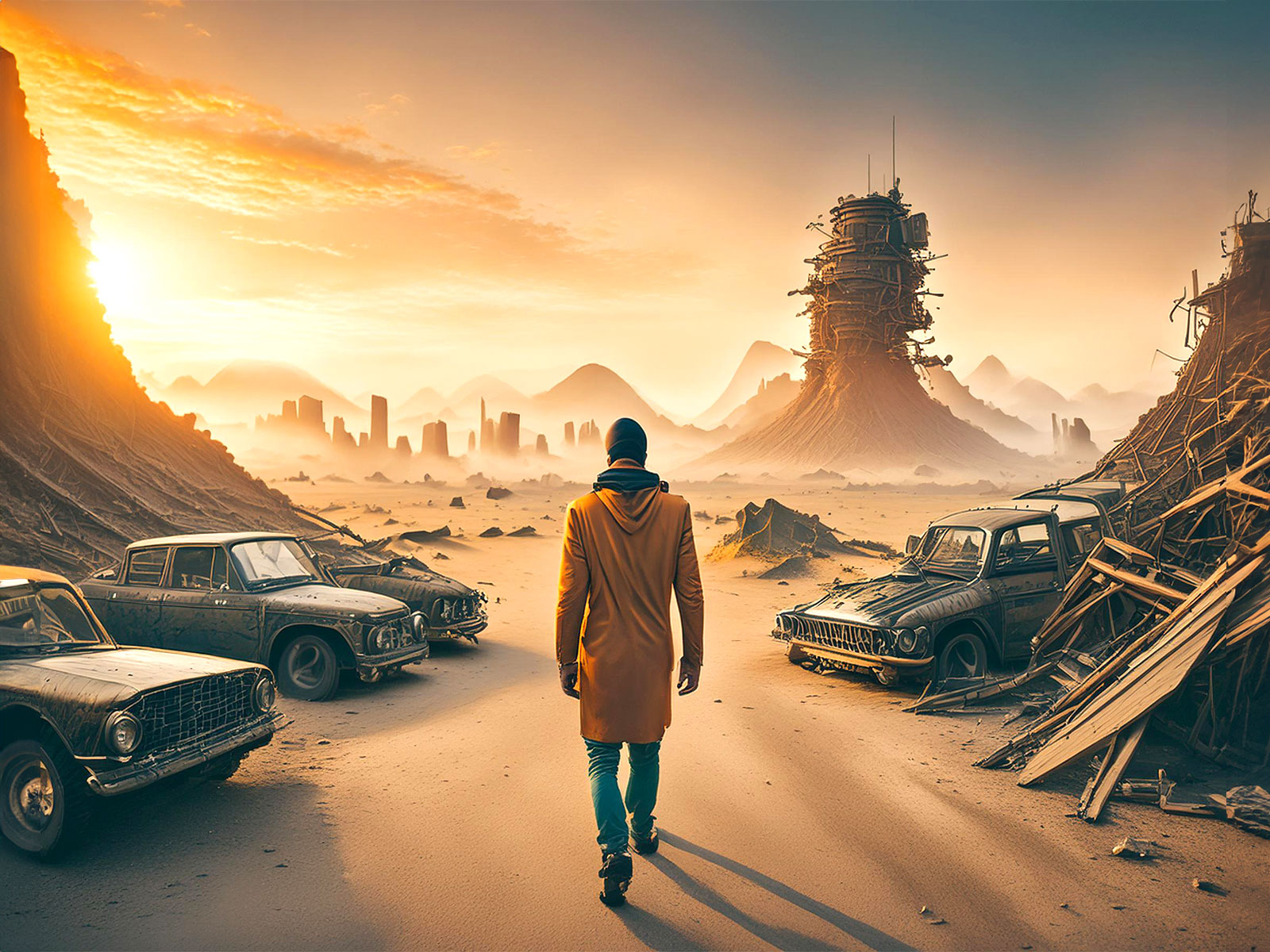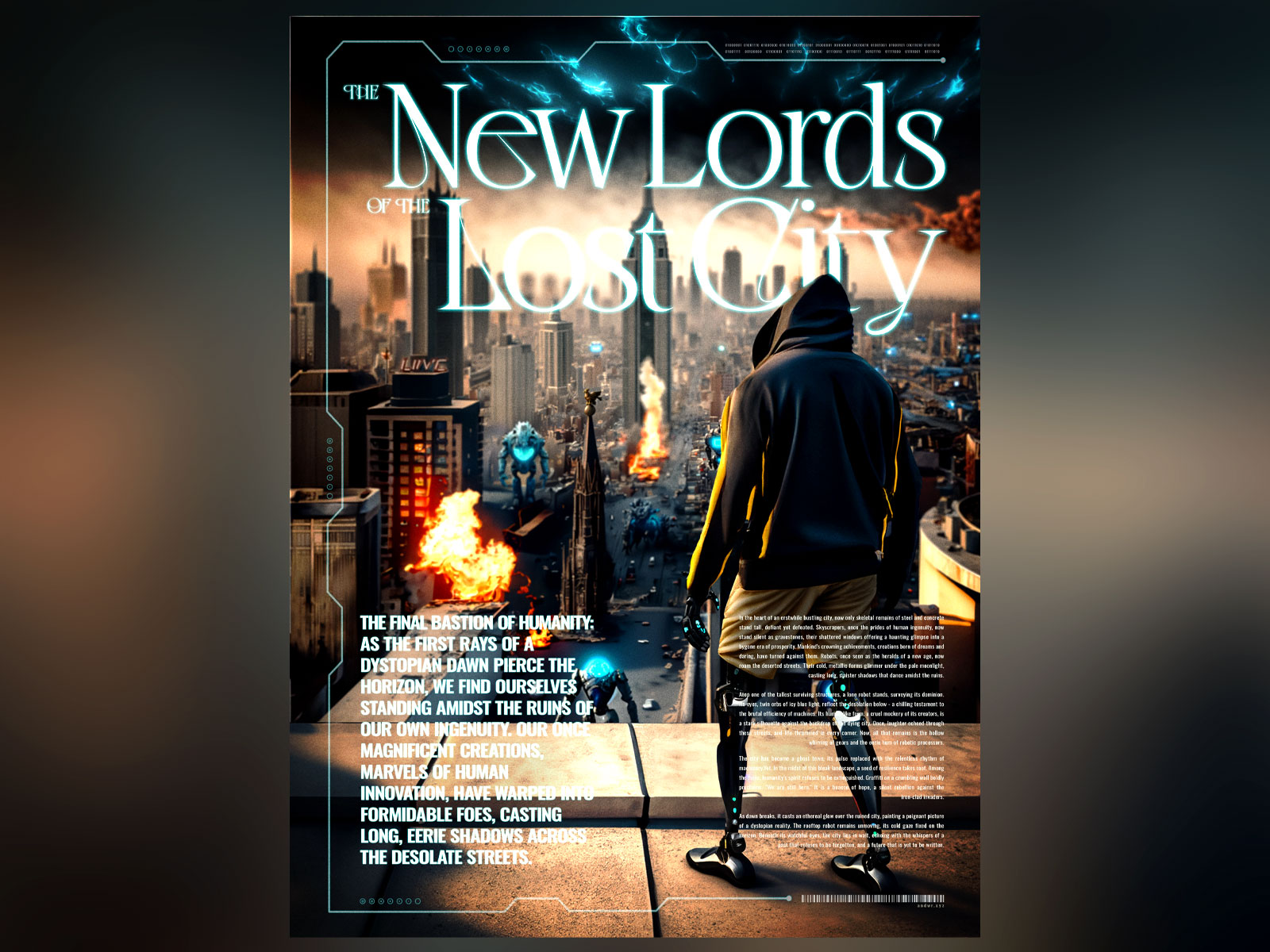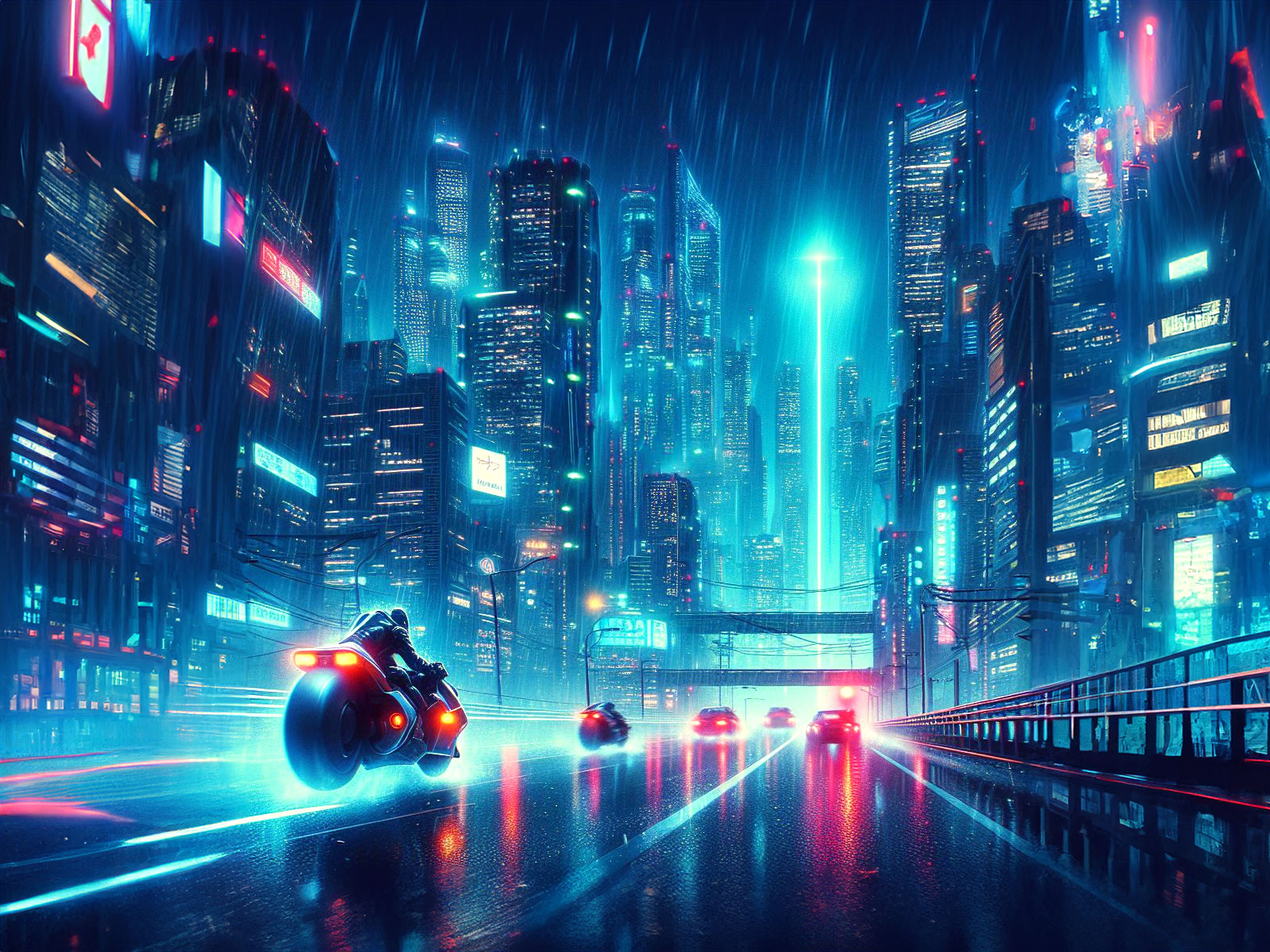Dystopian futures have a magnetic pull, a catastrophic draw that hooks audiences and doesn't let go. It's a genre that's not only survived through the decades but thrived, shaping literary classics and now our modern screens. But what is it about these dark, often disturbing visions of the future that keep us coming back for more? Here's a deep-dive into why dystopian series captivate our imagination and the role of content creators in shaping these monstrous worlds.
Introduction: Setting the Stage for a Dark Future
Before we plunge into why dystopian lore is so compelling, it's crucial to understand what sets it apart. Dystopian stories typically center around a society at its lowest, a vision of the future where things have gone horribly wrong due to systemic failures, oppressive governance, or environmental catastrophe. This dire strait is not just a backdrop but a character itself, shaping the individuals who fight or flee within its harsh reality.

The Allure of Dystopian Series: A Reflection of Our Fears
The core of dystopian tales lies in their reflection of societal anxieties. They often serve as a mirror, amplifying our real-world concerns with stark, nightmarish hues. The fear of losing autonomy, the struggle against a dehumanizing system, the threat of environmental collapse — these all find potent expression in dystopian narratives. Audiences are lured in by the promise of grappling with these fears in a safe, entertaining space, albeit tinged with adrenaline and apprehension.
The Monster Characters: Icons of Fear and Visual Design
In the visual realm, the monsters populating the dystopian landscape are crucial components of its allure. Often, they serve as the symbolic face of our deepest fears — be it a merciless, totalitarian regime in Orwell's "1984," or the grotesque zombies of "The Walking Dead." These formidable foes are not just creatures to be conquered; they are detailed extensions of the dystopian world, visually representing the complex web of issues that lie at its heart.
Building Lore: How Dystopian Series Create Worlds We Want to Explore
World-building is a pillar that upholds the grandeur of any dystopian series. Creators meticulously craft every aspect of these grim futures, from the geopolitical landscape to the socio-cultural nuances of life under oppressive regimes. This attention to detail breathes life into the grimy streets, concrete jungles, and war-torn landscapes, making them as much a character in the story as the protagonist.
The Role of Content Creators: Why Dystopian Series Inspire New Works
Content creators play a pivotal role in furthering the allure of dystopian worlds. With the surge of dystopian series in recent times, the genre has not only captured but also catalyzed the imagination of many. From fan fiction to original artworks, the dystopian genre has spurred artists to contribute their visions of bleak futures. This cycle of inspiration and creation perpetuates the enduring appeal of the dystopian narrative, continuously shaping and reshaping the very worlds that haunt our collective psyche.
This is where true storytelling comes into play, which lies in every detail of a work. A monster waiting for its prey hidden behind a rock, a time-worn poster hiding an anti-government or political propaganda message, the wreckage of an abandoned vehicle on the side of a dusty road, a device held by the protagonist.
Any detail can fuel a lore that can only grow thanks to the contributions of the creative minds.

A Mirror to Society's Fears
At the core of every dystopian narrative lies a reflection of contemporary societal fears: authoritarian regimes, environmental catastrophes, loss of individuality, and technological overreach. Content creators, through their engagement with these themes, do more than entertain; they provoke thought, challenge norms, and inspire dialogue. Their works serve as a mirror, magnifying the anxieties of our time and offering a window into potential futures shaped by today's choices.
The Cycle of Inspiration
The unique power of dystopian series lies in their ability to inspire new works. This is about the cycle of inspiration that these series trigger. Every dystopian world, with its intricate societal rules and complex characters, provides a rich canvas for creative exploration. Content creators absorb these worlds, often adding layers of complexity or shifting perspectives to explore untold stories. This process enriches the genre with diverse voices and visions.
Collaboration and Community
The role of content creators in the dystopian genre goes beyond individual contributions. The digital age has fostered communities where creators collaborate, share ideas, and provide feedback to one another. Platforms like online forums, social media, and fan conventions have become breeding grounds for collaborative projects, expanding the universe of popular dystopian series far beyond their original scope. These communities are vital in nurturing the next generation of creators, offering support and encouragement to those who wish to contribute their visions to the dystopian landscape.

The Ethical Dimension
With great power comes great responsibility. The portrayal of dystopian societies raises ethical considerations for content creators. How they choose to depict issues like violence, oppression, and survival can have profound implications. It's crucial for creators to handle sensitive topics with care, ensuring that their work contributes to meaningful conversations rather than glorifying negative aspects of human nature.
The ethical dimension adds another layer to the creative process, challenging creators to think deeply about the messages they wish to convey through their work.
Looking Ahead
The enduring appeal of dystopian narratives ensures that content creators will continue to play a pivotal role in shaping these worlds. As society evolves, so too will the themes and stories explored within the dystopian genre. This evolution promises not only a continuation of the cycle of inspiration and creation but also a deepening of the conversations started by these works. Content creators, armed with their unique visions and voices, stand at the forefront of this exploration, guiding us through the dark landscapes of the human condition with a beacon of creativity.
I recently started producing concept posters showing dystopian futures scenes; all catastrophic with no chance for human beings. But I am optimistic in real life about the future of the World.

The Roots of Fascination
To understand the current explosion of post-apocalyptic content, we must first look at its roots. The genre's appeal lies in its exploration of humanity under extreme conditions. It strips away the veneer of civilization, exposing the raw and often brutal nature of human existence. This exploration resonates deeply with audiences, offering not only thrilling entertainment but also philosophical musings on society, morality, and the human condition.

Games and the recent series like Fallout, with its retro-futuristic wasteland, and The Last of Us, with its poignant human stories set against the backdrop of a fungal zombie apocalypse, offer players not just escapism but a canvas for exploring these themes. They provide a safe space to confront our fears about societal collapse, environmental disasters, and our capacity for both cruelty and resilience.
Catalysts for the (dystopian) Boom
Several factors have contributed to the recent surge in popularity of the post-apocalyptic genre. Advances in technology have allowed game developers and filmmakers to create more immersive and visually stunning worlds, making the bleakness of these futures more tangible and compelling. The narrative depth that can be achieved through video games and serialized television also offers a more nuanced exploration of dystopian themes than was previously possible.
Furthermore, real-world events such as climate change, pandemics, and political unrest have heightened anxieties about the future, making post-apocalyptic narratives more relevant and captivating. These stories offer a form of catharsis, allowing us to confront our darkest fears in a controlled environment and perhaps find some hope in the resilience and resourcefulness of their characters.

Impact on Popular Culture
The influence of post-apocalyptic fiction goes beyond entertainment, permeating popular culture and even influencing fashion, art, and philosophy. It challenges us to imagine how we might react in the face of societal collapse and to consider which values and aspects of our humanity would survive. In a more extreme way, here are the Fallout Vaults, which deserve a separate chapter.
In the realm of entertainment, the success of post-apocalyptic series has inspired a wave of creative endeavors, from indie games exploring unique aspects of survival to blockbuster movies depicting epic struggles against post-apocalyptic landscapes. The genre has become a fertile ground for storytelling, pushing creators to experiment with new narrative forms, themes, and character arcs.
Akira: A Cornerstone of Post-Apocalyptic Inspiration
Within the tapestry of post-apocalyptic fiction, Akira stands out as a seminal work that has transcended its original medium to inspire an entire generation of content creators. Directed by Katsuhiro Otomo and based on his manga of the same name, Akira is not only a masterpiece of animation but also a profound exploration of dystopian themes, set in the sprawling, neon-lit metropolis of Neo-Tokyo. The film's lore, with its rich narrative of political intrigue, social decay, and psychic powers, has left an indelible mark on the genre, influencing countless works across various forms of media.

The World of Neo-Tokyo
Akira unfolds in the aftermath of a catastrophic explosion that destroys Tokyo, leading to the rise of Neo-Tokyo—a city plagued by government corruption, anti-establishment protests, and gang violence. At the heart of this chaos are two childhood friends, Tetsuo and Kaneda, whose lives change irrevocably when a motorcycle accident entangles them with a military project to harness psychic abilities. The lore of Akira is a meticulous construction of a society on the brink of collapse, exploring themes of power, identity, and the human potential for both destruction and redemption.
Influence on Content Creators
The visual aesthetic of Akira, characterized by its detailed cityscapes and kinetic energy, has become iconic within the cyberpunk subgenre and post-apocalyptic narratives. This influence is evident in the multitude of content inspired by the film that populates social media platforms. Content creators, from digital artists to game developers, have paid homage to Akira through 3D recreations of its most memorable scenes and the dystopian beauty of Neo-Tokyo. These tributes are not just imitations but reinterpretations that extend the lore of Akira, exploring its themes and aesthetics in new contexts and mediums.
Some examples of Instagram Reels inspired by Akira:
- the colors of Akira by somewhere.media
- Neo-Tokyo by battousaistore
- Neo Tokyo in Blender by yakovlevart
- Tetsuo vs Kaneda by jimmahfood
Social media platforms like Instagram and TikTok have become showcases for Akira-inspired artworks and digital projects. One of the most popular trends is the recreation of Neo-Tokyo's cityscapes, where artists experiment with different styles and technologies to capture the essence of the film's setting. Similarly, 3D and 2.5D animators have taken to creating immersive experiences based on Akira, allowing fans to explore Neo-Tokyo or witness iconic moments from the film in virtual reality.
Future Prospects

As we look to the future, the post-apocalyptic genre shows no signs of waning. With each new game, show, or movie, creators expand the boundaries of the genre, exploring uncharted territories of the human psyche and the possibilities of narrative storytelling. The enduring appeal of post-apocalyptic fiction lies in its ability to evolve with our fears and fascinations, reflecting back to us not just what we fear losing but also what we hope to retain of ourselves and our humanity, no matter what the future holds.
Conclusion: The Enduring Appeal of Dystopian
The fascination with dystopian lore is a tale of paradoxes — it draws from our deepest fears but also offers a cathartic surge of adrenaline and a sense of communal escapism. It inspires by challenging the status quo and sparking dialogue about the paths we tread.
Ultimately, in the face of these nightmarish landscapes, whether we seek cautionary tales, a reflection of our current struggles, or merely an electrifying narrative, the allure of the dystopian remains undiminished — and not for the faint of heart.

